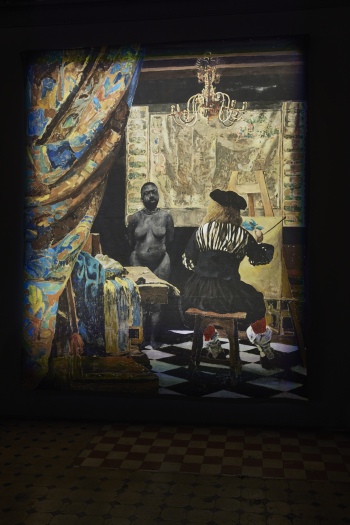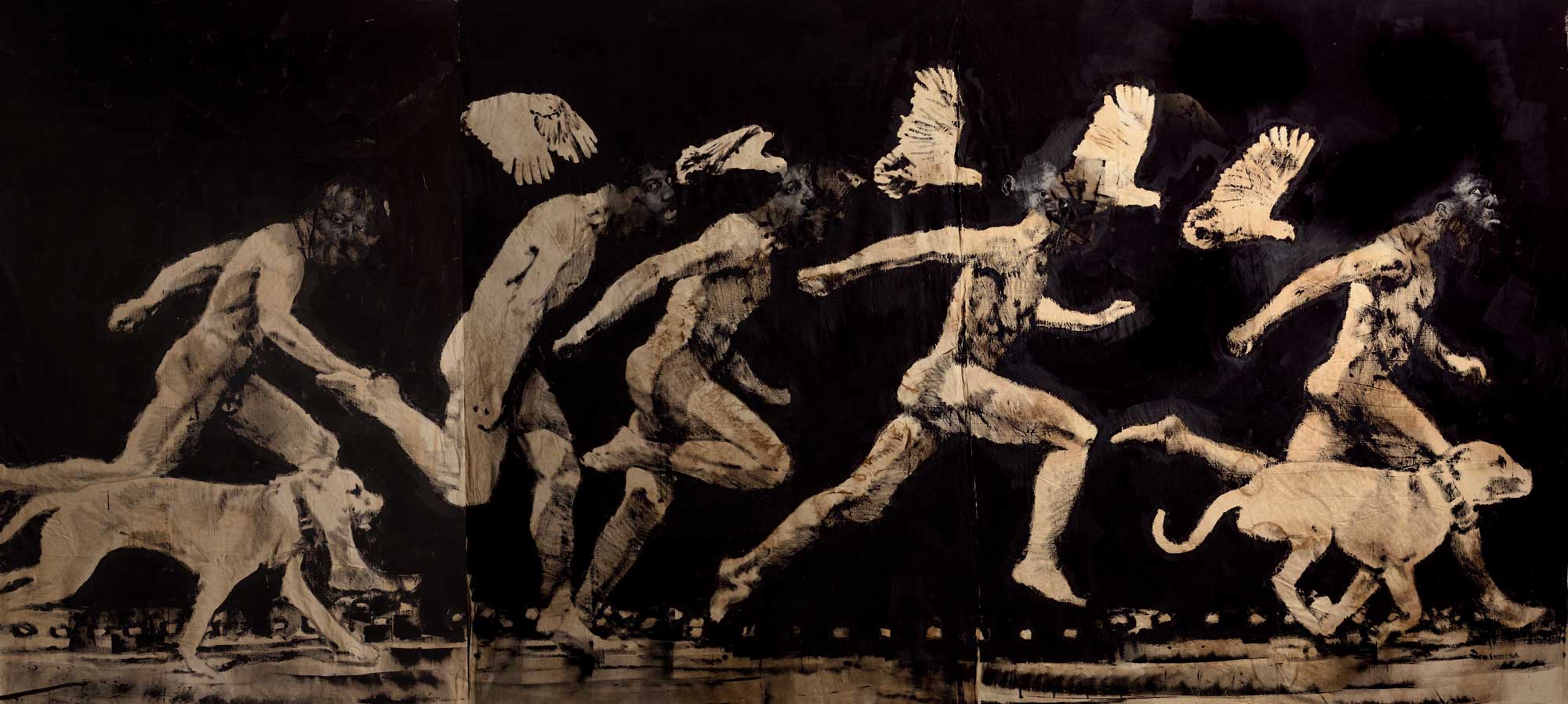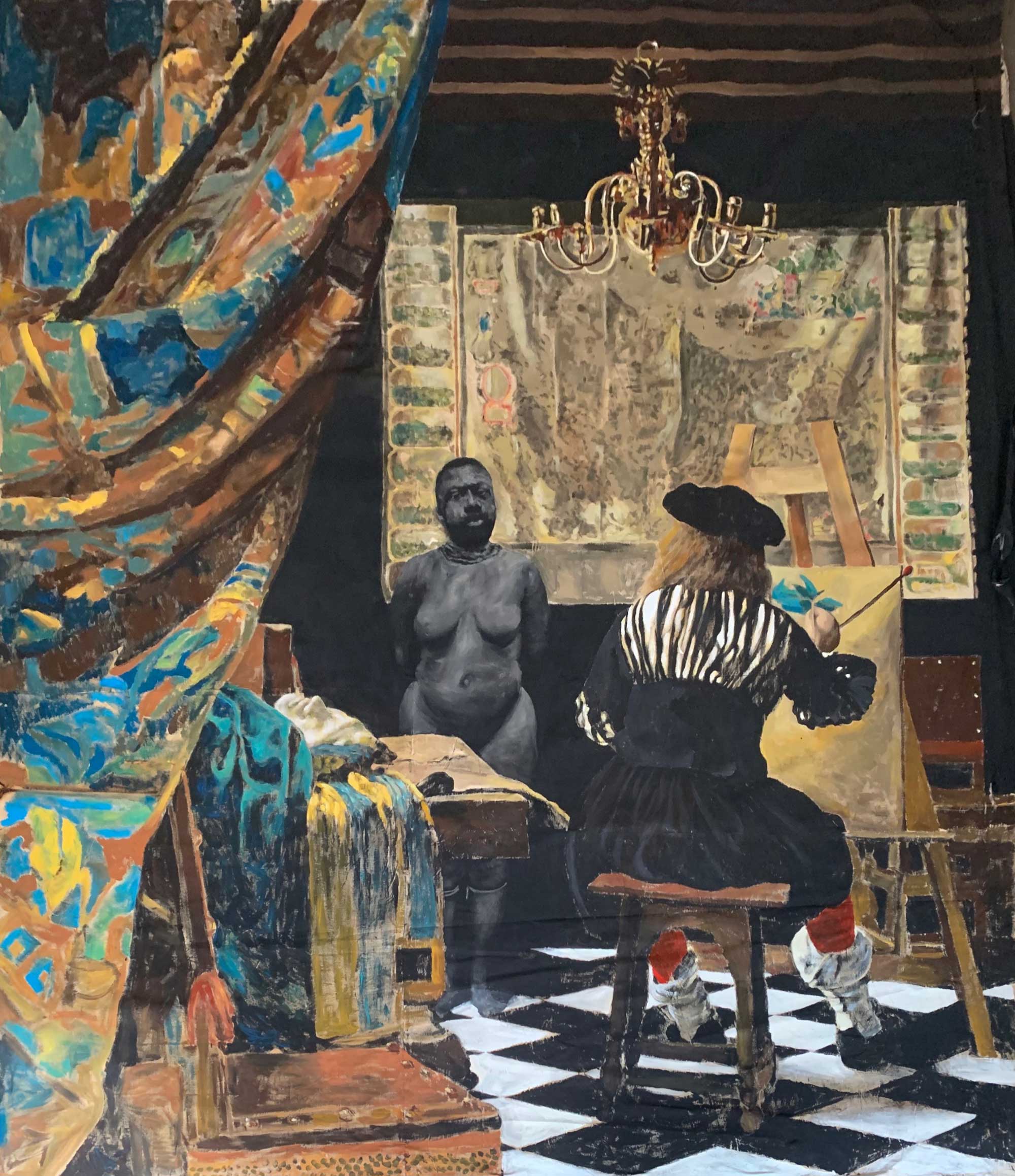Roméo Mivekannin
Web presence
Instagram: https://www.instagram.com/romeomivekannin/
Works
Panoramic Image: Man Running with Animals
Date
2024
A
Description
Roméo Mivekannin is a multidisciplinary artist who challenges the boundaries between painting, sculpture, and installation. Informed by both his academic knowledge and his family’s experience with colonization—he is a descendant of Behanzin, the last king of Dahomey (Benin)—Mivekannin creates compositions that confront European iconography, reimagining classical paintings and photographs by replacing the subjects’ faces with his own self-portrait.
In his series The Walking Man (2022–2024), Mivekannin draws upon Human Figure in Motion, the late nineteenth-century photographic study by British photographer Eadweard Muybridge, who was inspired by the work of Étienne-Jules Marey. Muybridge’s study captured people performing various movements, photographed from multiple angles to create sequential images. Mivekannin reinterprets these images, using sequential self-portraits in motion to explore themes of migration, memory, and time. In Man Running with Animals, he offers a contemporary commentary on Africa and the world, portraying humankind as facing the same critical circumstances as animals in the face of climate change and war.
The Painter in His Studio after Jan Vermeer
Date
2023
Description
Roméo Mivekannin’s creative process entails observing a work of art and asking himself: “What does the artist really show?” What is the intention and context behind what is evident to the eye? He then decodes the original imagery, replacing the models’ faces with his own self-portrait in black and white. In The Painter in His Studio after Jan Vermeer, he also transforms the body of the model into a naked female in black and white, thus shedding light on subjects previously relegated to the shadows of domination. Mivekannin’s choices are intentional and subversive, aimed at reversing the perspectives of the characters in the paintings and the passersby who observe them. His face gazes directly at the audience, catching their eye, arresting them, and transforming them from passive lookers into active, critical viewers of the scene: A scene deploying wealth, based on colonialism.
The Souls of Black Folk, 2020
Date
2020
Material
Acrylic on fabric
Description
For The Souls of Black Folk, Roméo Mivekannin draws inspiration from W. E. B. Du Bois’s seminal 1903 book of the same title, a cornerstone of the early twentieth-century Black rights movement in the United States and a foundational text in global discussions on race and equality. Mivekannin builds on these themes and characters for his installation, creating a compelling visual dialogue between history, activism, and identity. It consists of sixty-eight portraits depicting prominent Black politicians, activists, intellectuals, actors, singers, and writers—with figures such as Josephine Baker, Kamala Harris, Malcolm X, and Wole Soyinka, or Édouard Glissant and Alicia Keys, who have played key roles in the fight for Black rights and against racism. Interspersed among these portraits of individuals from Africa, the African diaspora, or Afrodescendant communities is a silkscreen print of the title page from Du Bois’s book, pointing to the installation’s literary inspiration, which grounds every portrait literally.



